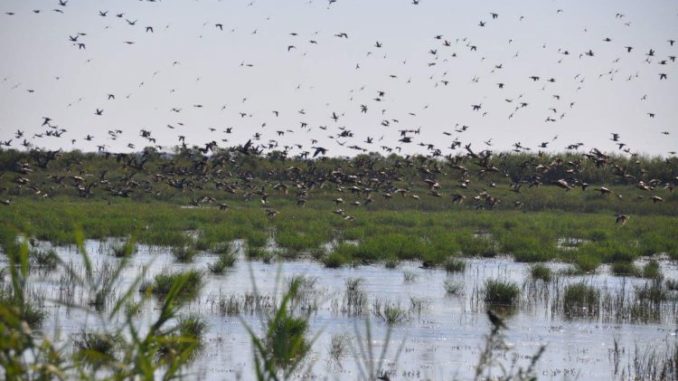
59,000 birds is second-lowest estimate on record
Looks like there might be more mosquitoes than teal during tomorrow morning’s opener for the 16-day Louisiana teal season.
Larry Reynolds, the state’s waterfowl study leader for the Louisiana Department of Wildlife and Fisheries, estimated there were only 59,000 birds during this week’s aerial flights over the state’s coastal zone, along with Catahoula Lake.
This estimate is 84 percent lower than last year’s estimate of 373,000, 32 percent below the most recent 5-year average of 183,000 and 75 percent below the long-term average of 236,000, according to Reynolds’ report.
It is the second-lowest estimate for blue-winged teal on record, with only the 50,000 estimated in 2013 being lower. The bluewing estimate for Southwest Louisiana is also the second lowest on record, and the estimate for Southeast Louisiana the third lowest behind the 500 in 2016 and the 4,000 in 2013.
In contrast, the 6,000 blue-winged teal counted at Catahoula Lake was the highest since 18,000 were counted in 2012, but is still just two-thirds of the most recent 10-year average of 9,000. And the 16,000 estimated mottled ducks is down substantially from the 25,000 estimated last September and the most recent 10-year average of 29,000. It is also the second lowest estimate on record for this survey with only 2016’s estimate of 12,000 being lower.
Here are Reynolds’ comments submitted with this year’s aerial results:
“The overwhelming majority of bluewings counted on this survey were in agricultural habitat, with the only notable flocks in Southwest Louisiana seen in flooded fields south and west of Gueydan and southwest of Crowley. The largest concentration of bluewings seen were on flooded fields north of the surveyed area (so not included in survey estimates) between Welsh and Jennings while transitioning between transect lines. In Southeast Louisiana, small flocks were seen in the upper-Terrebonne marshes and east of Venice, with no concentrations noted over the surveyed area. Pre-survey reports from LDWF staff trapping/banding wood ducks and conducting other routine operations included large numbers of bluewings observed on Rockefeller Refuge, and a number of agricultural habitats mostly north of the surveyed area, but those observations were not borne out on this survey.
Habitat conditions across the coast in Southwest Louisiana are much improved over the past two years. A drier spring and summer resulted in excellent germination and growth of seed-producing annual vegetation in many locations. Broad expanses of wild millets and sedges were visible from the plane in fresh, intermediate and even brackish marshes. Although invasive aquatics continue to be a problem in many locations, like the marsh south of White Lake and west of Highway 27, apparent production of moist-soil vegetation has improved habitat quality. Despite low water levels since the late-spring, recent rains of 7 to10 inches have increased levels to average or above-average in some locations. Submerged aquatic vegetation (SAV) was less visible, highly variable,and was considered about average in Southwest Louisiana. In agricultural areas, only managed water and broad mudflats from recent rainfall were available, and levels of flooding seemed average for this time of year.
Habitat conditions in Southeast Louisiana were variable across locations, but excellent SAV production was noted in the upper-Terrebonne marshes, Atchafalaya Delta WMA, and the mouth of Mississippi River, where Tropical Storm Gordon seemed to have minimal impacts compared to Tropical Storm Nate last year. Increased production of delta duck potato over the past two years was noted at both deltas as well. Elsewhere, SAV production was spotty across the southeast survey area and habitat conditions seemed average.
At Catahoula Lake, habitat conditions were much improved over 2017 when rainfall from Hurricane Harvey flooded available habitat. Cracks in the soil at the center of lake were visible through the water, indicating a complete drawdown during the dry summer conditions before recent manipulation to raise water levels to within management targets. Extensive growth of moist-soil vegetation was evident, and food production for migrating and wintering ducks should be very good if water-level targets can be maintained.”


